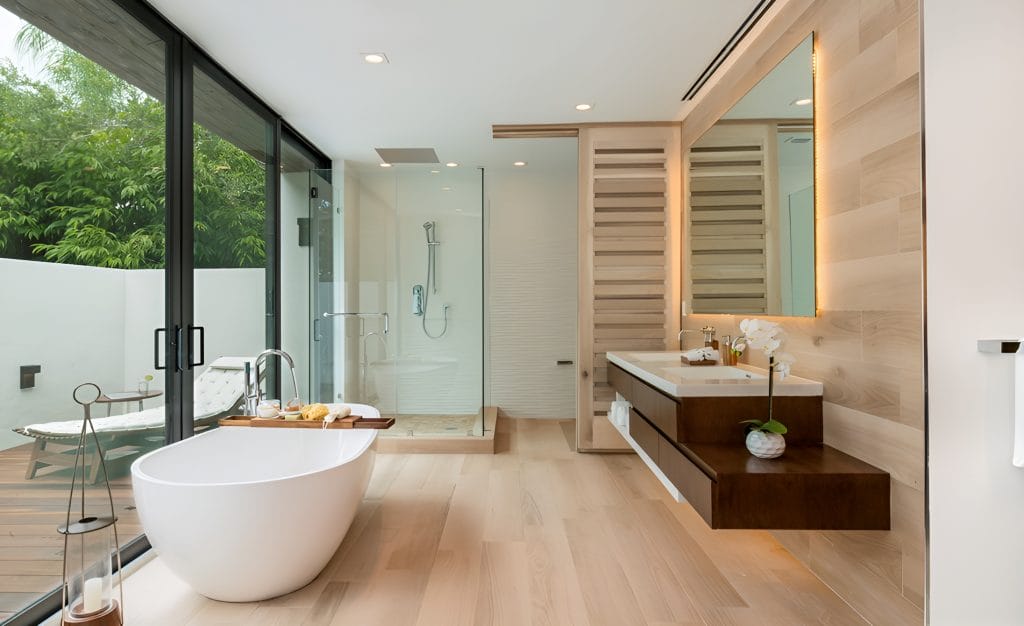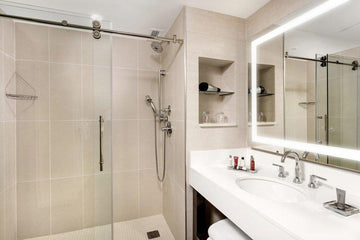In the world of home automation, setting up smart lights in bathroom can transform the way you experience one of the most frequently used spaces in your home. Smart lighting technology not only enhances the ambiance but also offers significant energy savings and convenience. For industry professionals in QA, understanding the nuances of smart lighting installation is crucial to ensuring seamless integration and functionality.
Smart lights in the bathroom can provide the perfect blend of practicality and luxury. Whether you're unwinding in the tub after a long day or getting ready for a busy morning, the right lighting can make all the difference. This guide will walk you through the key considerations and steps involved in setting up smart lights in your bathroom, ensuring a smooth and efficient installation process.

Why Choose Smart Lights for Your Bathroom?
Smart lighting systems offer a range of benefits that traditional lighting simply can't match. One of the primary advantages is the ability to customize the lighting to suit various needs and moods. For instance, you can set the lights to a warm, dim glow for a relaxing bath, or a bright, white light for morning grooming routines.
Moreover, smart lights can be controlled remotely via smartphone apps or voice commands, adding an extra layer of convenience. By integrating with other smart home devices, you can create automated scenes that adjust the lighting based on time of day or activity. This not only enhances your daily routine but also contributes to energy efficiency, as you can ensure lights are only used when needed.
For more insights into smart home technology, check out our article on scent diffuser smart systems.
Key Considerations for Smart Light Installation
1. Compatibility and Integration
When setting up smart lights in the bathroom, the first step is to ensure that the chosen lighting system is compatible with your existing smart home ecosystem. Most smart lights are designed to work with popular platforms such as Amazon Alexa, Google Home, and Apple HomeKit. However, it's important to verify compatibility to avoid any integration issues.
Additionally, consider the type of bulbs or fixtures you wish to install. Some smart lighting systems use standard bulbs that can be installed in existing fixtures, while others may require specialized fixtures. Understanding these requirements upfront can save time and hassle during installation.
2. Placement and Design
Strategic placement of smart lights is essential for achieving optimal lighting in the bathroom. Consider the areas where lighting is most needed, such as above the mirror, around the shower, and near the bathtub. Proper placement can enhance the functionality and aesthetic appeal of the space.
Moreover, design plays a crucial role in the overall look and feel of the bathroom. Choose fixtures and bulbs that complement the existing decor and add a touch of elegance. For inspiration, explore our guide on smart soap dispensers and how they can enhance bathroom design.
3. Security and Safety
Security is a vital consideration when installing smart lights in any part of the home, including the bathroom. Ensure that the system you choose offers robust security features to protect against unauthorized access. Additionally, consider safety aspects such as waterproofing and electrical safety, especially in a moisture-prone environment like the bathroom.
For further reading on bathroom safety, visit touchless sanitizer dispensers.
Step-by-Step Guide to Setting Up Smart Lights
Setting up smart lights in your bathroom involves several key steps, from selecting the right products to configuring the system for optimal performance. Here's a step-by-step guide to help you through the process:
Step 1: Choose the Right Smart Lighting System
Begin by researching and selecting a smart lighting system that meets your needs and preferences. Consider factors such as compatibility with your existing devices, ease of use, and the range of features offered. Popular options include Philips Hue, LIFX, and Wyze, each offering unique benefits and customization options.
Step 2: Install Smart Bulbs and Fixtures
Once you've chosen your system, the next step is installation. If you're using smart bulbs, simply replace your existing bulbs with smart ones. For smart fixtures, follow the manufacturer's instructions for installation. Ensure all connections are secure and test the functionality before proceeding.
Step 3: Configure the Smart Lighting System
After installation, configure the system using the accompanying app or control interface. Set up schedules, create scenes, and customize the lighting settings to suit your preferences. Take advantage of features like motion sensors and voice control for added convenience.
For tips on optimizing smart lighting, explore our article on smart bathroom water filters.
Step 4: Integrate with Other Smart Devices
To maximize the benefits of smart lighting, integrate the system with other smart devices in your home. This allows for seamless automation and control, creating a cohesive smart home experience. For example, you can set the lights to turn on automatically when you enter the bathroom or adjust based on the time of day.
Conclusion
Setting up smart lights in the bathroom is a worthwhile investment that enhances the functionality, convenience, and aesthetic appeal of your space. By following the steps outlined in this guide, you can achieve a successful installation that meets your needs and preferences. Embrace the future of home automation and enjoy the benefits of a smart bathroom that caters to your lifestyle.
For more information on smart bathroom design, visit eco-friendly smart bathroom design.

Frequently Asked Questions (FAQ)
1. Are smart lights safe to use in a bathroom?
Yes, smart lights are safe for bathroom use, provided they are installed correctly and comply with electrical safety standards. Ensure the lights are rated for wet or damp environments and follow manufacturer guidelines.
2. Can I control smart lights without a smartphone?
Absolutely. Most smart lighting systems can be controlled via voice commands using devices like Amazon Alexa or Google Home. Additionally, some systems offer physical switches or remotes for manual control.
3. How do smart lights save energy?
Smart lights save energy through features like scheduling, motion detection, and dimming capabilities. By automating lighting based on usage patterns, you can reduce energy consumption and lower utility bills.






